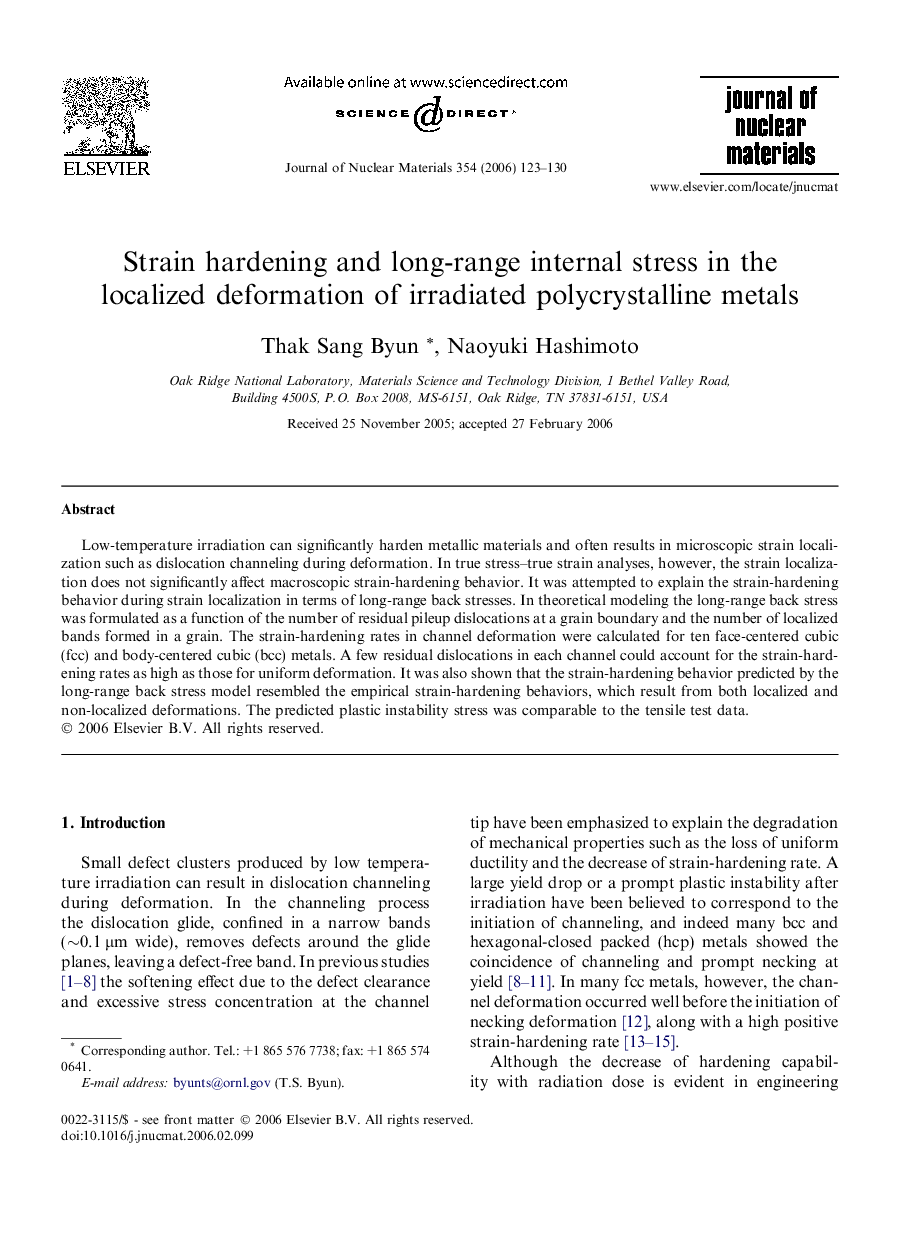| Article ID | Journal | Published Year | Pages | File Type |
|---|---|---|---|---|
| 1569923 | Journal of Nuclear Materials | 2006 | 8 Pages |
Low-temperature irradiation can significantly harden metallic materials and often results in microscopic strain localization such as dislocation channeling during deformation. In true stress–true strain analyses, however, the strain localization does not significantly affect macroscopic strain-hardening behavior. It was attempted to explain the strain-hardening behavior during strain localization in terms of long-range back stresses. In theoretical modeling the long-range back stress was formulated as a function of the number of residual pileup dislocations at a grain boundary and the number of localized bands formed in a grain. The strain-hardening rates in channel deformation were calculated for ten face-centered cubic (fcc) and body-centered cubic (bcc) metals. A few residual dislocations in each channel could account for the strain-hardening rates as high as those for uniform deformation. It was also shown that the strain-hardening behavior predicted by the long-range back stress model resembled the empirical strain-hardening behaviors, which result from both localized and non-localized deformations. The predicted plastic instability stress was comparable to the tensile test data.
